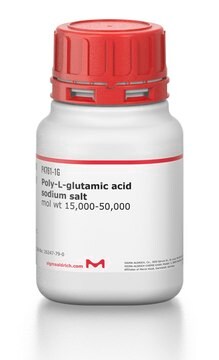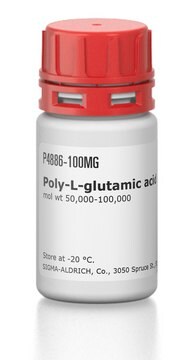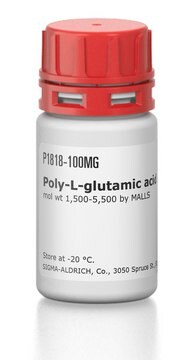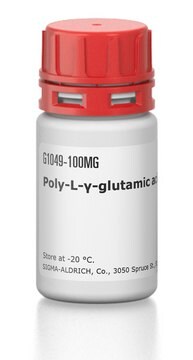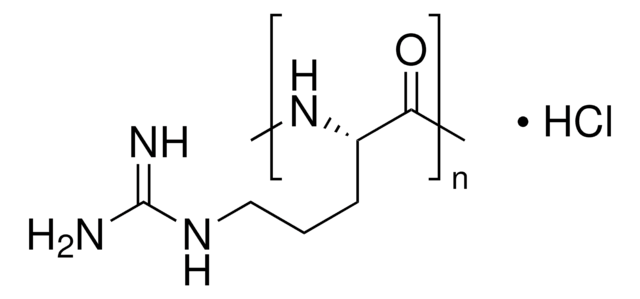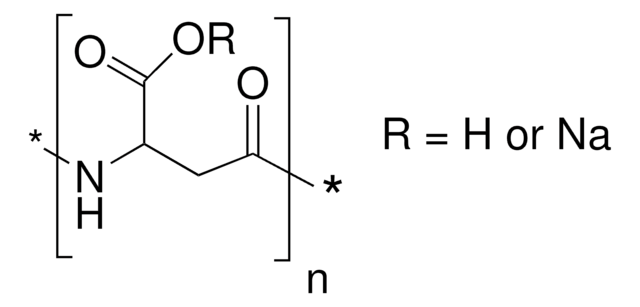P4636
Poly-L-glutamic acid sodium salt
suitable for ligand binding assays, Mol wt 3,000-15,000
Synonyme(s) :
L-Glutamic acid homopolymer sodium salt
About This Item
Produits recommandés
Nom du produit
Poly-L-glutamic acid sodium salt, mol wt 3,000-15,000
Forme
powder
Poids mol.
3,000-15,000
Technique(s)
ligand binding assay: suitable
Couleur
white to off-white
Température de stockage
−20°C
Chaîne SMILES
N([C@@H](CCC(=O)O)C(=O)N[C@@H](CCC(=O)O)C(=O)O)C(=O)[C@@H](N)CCC(=O)O
InChI
1S/C15H23N3O10/c16-7(1-4-10(19)20)13(25)17-8(2-5-11(21)22)14(26)18-9(15(27)28)3-6-12(23)24/h7-9H,1-6,16H2,(H,17,25)(H,18,26)(H,19,20)(H,21,22)(H,23,24)(H,27,28)/t7-,8-,9-/m0/s1
Clé InChI
BUZMZDDKFCSKOT-CIUDSAMLSA-N
Vous recherchez des produits similaires ? Visite Guide de comparaison des produits
Application
- Bulk Biopolyelectrolyte Complexes from Homopolypeptides: Solid "Salt Bridges".: Investigates the creation of solid structures from biopolyelectrolyte complexes using Poly-L-glutamic acid sodium salt, emphasizing its potential in creating innovative materials with unique properties (Digby ZA et al., 2023).
- Polymeric Core-Shell Nanoparticles Prepared by Spontaneous Emulsification Solvent Evaporation and Functionalized by the Layer-by-Layer Method.: This research utilizes Poly-L-glutamic acid sodium salt in the production of core-shell structured nanoparticles, indicating its utility in nanoparticle functionalization and stability (Szczęch M et al., 2020).
Remarque sur l'analyse
Autres remarques
Code de la classe de stockage
11 - Combustible Solids
Classe de danger pour l'eau (WGK)
WGK 3
Point d'éclair (°F)
Not applicable
Point d'éclair (°C)
Not applicable
Équipement de protection individuelle
Eyeshields, Gloves, type N95 (US)
Faites votre choix parmi les versions les plus récentes :
Déjà en possession de ce produit ?
Retrouvez la documentation relative aux produits que vous avez récemment achetés dans la Bibliothèque de documents.
Articles
Humankind has utilized protein materials throughout its existence, starting with the use of materials such as wool and silk for warmth and protection from the elements and continuing with the use of recombinant DNA techniques to synthesize proteins with unique and useful properties.
Notre équipe de scientifiques dispose d'une expérience dans tous les secteurs de la recherche, notamment en sciences de la vie, science des matériaux, synthèse chimique, chromatographie, analyse et dans de nombreux autres domaines..
Contacter notre Service technique